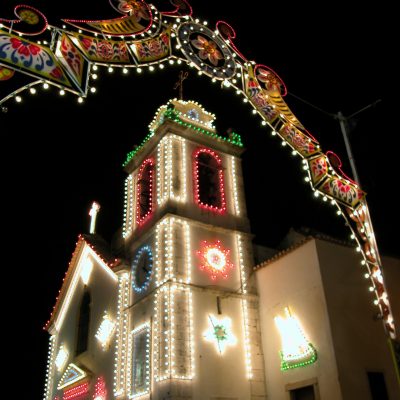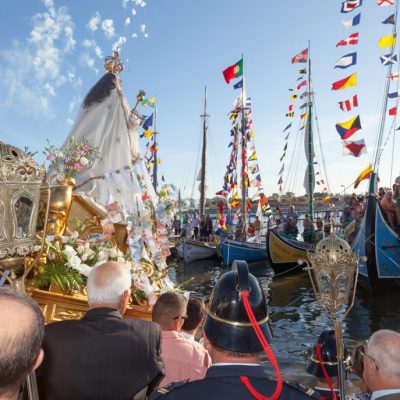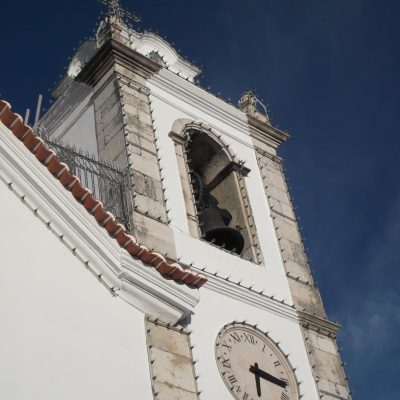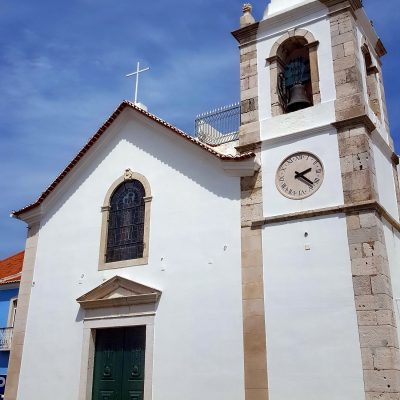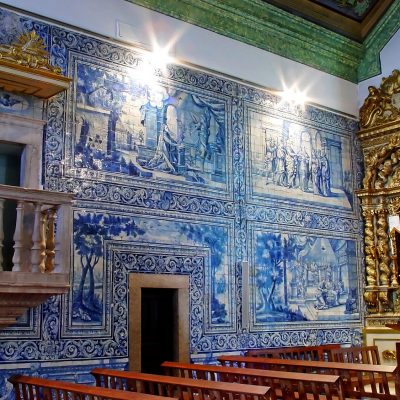 N.ª Sr.ª da Boa Viagem
N.ª Sr.ª da Boa Viagem
N.ª Sr.ª da Boa Viagem Church
Largo da Igreja, Moita
Church dedicated to N.ª Sr.ª da Boa Viagem, patron of Moita’s village. Since 2012, the building is classified as a Monument of Public Interest, since it represents a cultural value of national importance, and therefore has an associated protection regime.
The church, as it stands, is the result of a reshuffle set and extensions effected over the course of several centuries that have changed and assimilated the structure of the primitive hermitage. It’s foundation, which dates from 1631, was due to the residents and devout seafarers of N.ª Sr.ª da Boa Viagem, who with effort paid and carried out its construction. At the time, the medieval chapel of S.Sebastião, located next to the cemetery, no longer had suitable space to meet the needs of believers and the fact that it is distant from this housing nucleus by the river, made difficult their acess for both of the residents as well as the countless travelers who used the village wharf as boarding point. Sixty years after its construction, it won the mother statute, when Moita’s village was elevated to the category of town, by D.Pedro II regal letter.
The church has an architecture of classical influence, mannerist taste, presenting a frontage of simple lines, with some restraint and austerity at the volumes level and ornamental elements , a scenery that stretches to a structure endowed with great functionality and utilitarianism. This architectural aesthetic, considered of Portuguese origin and designated as floor style, reflects a troubled time of crisis and economic limitations that remained for more than a century, after the Manueline golden age.
Structural sobriety contrasts, however, with the decorative program of its interior following subsequent reforms that took place during the Baroque period. It was accurately during this period that the tile became a privileged artistic expression for liturgical narration. Its high communicative potentials are well evident in the 1719 blue and white covering of the Marian theme which fills the nave’s entire walls , to which is added the space baptismal font adorned with single-figure tiles. The use of tiles in conjunction with the other decorative arts here present, such as gold carving altars, nave’s stone pulpit, marmoreal coverings , altarpieces, images, and ceiling paintings contributed to providing a greater spiritual dimension giving a globalizing dimension to the religious space.
After the big earthquake of November 1, 1755, the main chapel was quickly recovered, but the bell tower and the side chapel, which contains a gold carving altar from the sixteenth century and images of Senhor dos Passos and Nossa Senhora das Dores, were only rebuilt years later , with the works to be always paid by the residents. The 1872 date inscribed on one of the steps of the church’s entrance surely indicates other interventions carried out, whose reach is unknown , under the material and financial responsibility of the own local community. This obligation, moreover, had been established in the royal provision of Philip II, king who legitimized the construction of the original hermitage.
Going back probably at the same time, the festivities in honor of N.ª Sr.ª da Boa Viagem, whose origin is also due to the devotion of seafarers, take place in the September month. They are the most important festivities of the county and are among the most important festivities held south of Tejo. Its program usually includes religious, profane, rural and maritime components throughout its ten days. Among others, the most outstanding are the religious celebrations that have their maximum splendor on the first Sunday of the festivities. On this day, the imposing procession travels the village´s streets in a journey of almost three hours that culminates with the arrival of the holy patron to the wharf. It is an atmosphere of great excitement and celebration that takes place the blessing of the traditional boats anchored there, decked out to receive graces and divine protection for “a good journey”.

